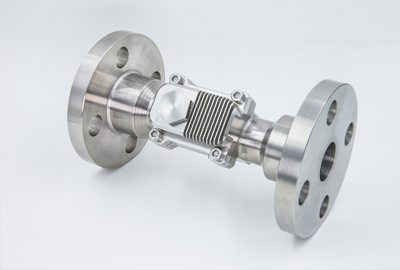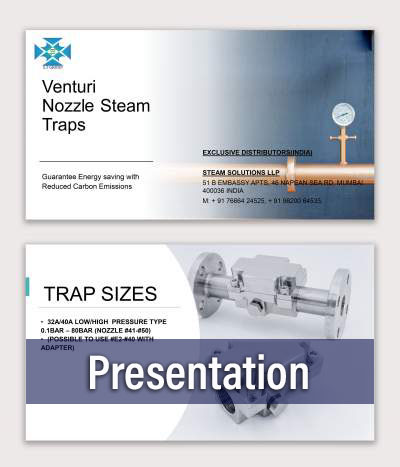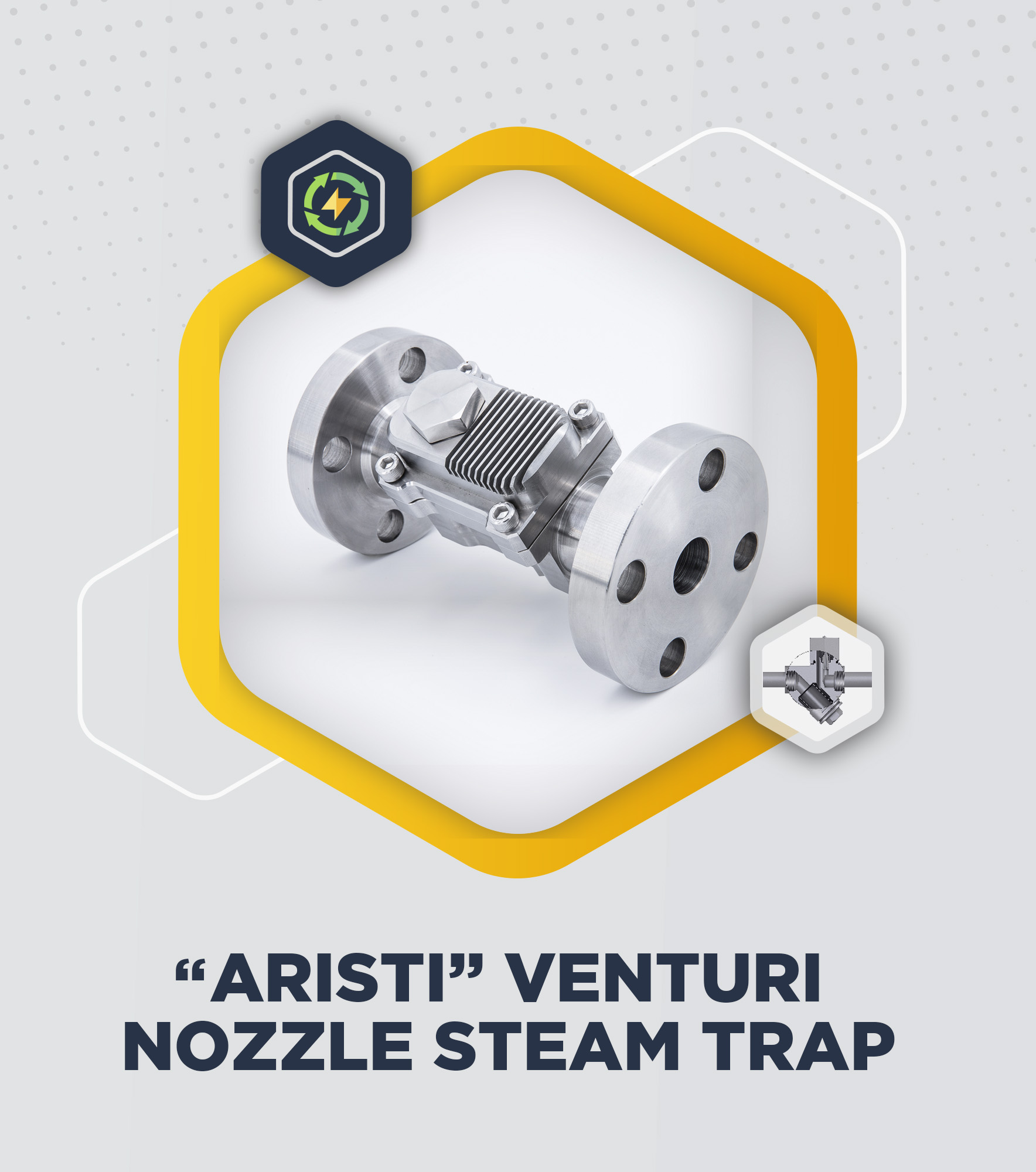"Aristi" Venturi Nozzle Steam Traps :
Steam traps are an essential part of a steam system. Unfortunately, conventional mechanical traps are often wasteful and laborious to maintain. We realize the scope of energy savings in which nobody is ever interested. Steam losses occurring through the Mechanical / Conventional steam traps, which have been considered to be a fixed cost, can now be reduced greatly.
On average, 10 to 30% of mechanical steam traps fail annually. These steam traps can either fail open or closed. When they fail open they leak live steam which is inefficient, wasteful and can pressurise condensate recovery lines. When they fail closed, the condensate can back up causing waterhammer and if not detected quickly, can be catastrophic as it causes pipework to erode, and at times, the implosion of pipework.
Mechanical steam traps fail, period. However, Venturi Nozzle steam traps, with patented technology and no moving parts, will not fail. Adopting the idea of a Venturi Nozzle instead of the conventional trap, condensate water can be separated from steam and exhausted more efficiently. With a range of over 50 Venturi Nozzles & Safety Factor of 1:1, we manage the entire steam recovery process more efficiently. Unlike most mechanical steam traps, a venturi orifice steam trap continuously removes condensate from a system. It allows any condensate present in the steam line to pass into the condensate return system the moment it is formed. The operation of the trap is based on the difference in density between water and steam.
How the "Aristi" traps differ from existing mechanical traps:
For, any of the mechanical traps (float, thermodynamic and inverted bucket type), the trap itself is unable to recover energy from the hot condensate.
Since, the hot condensate present on the primary side of the trap is in equilibrium with steam pressure, the total energy of the hot condensate is greater than the saturated condensate. In conventional traps when the trap opens, the hot condensate is discharged from higher pressure (steam pressure) to lower pressure (atmospheric pressure) and flashing occurs due to pressure drop and the steam loses a part of its energy having being convert into saturated condensate and flash steam (which escapes to the environment). This phenomenon is the part of all mechanical traps since all the traps open to pressure differential conditions. In Aristi trap, as the hot condensate moves across the Venturi nozzle, it experiences pressure drop and flashing occurs. This pressure drop is similar to the one which occurs when the mechanical traps open. The saturated condensate is discharged through the secondary side but the flash steam generated is recovered within the trap itself.
The recovered flash steam acts as back pressure at the mouth of Venturi Nozzle allowing the condensate to pass through but restricts the outflow of live steam. Therefore, in Aristi traps only saturated condensate is discharged and the flash steam generated from the hot condensate is held back.
SAVINGS: Where do savings come from?
The savings from Aristi traps come from the combined effect of energy savings from flash steam recovery, minimal operating losses and continuous discharge design and no moving parts.
1. No moving parts : No moving parts in the trap means no mechanical parts which ensures the trap is always Open and continuously Discharging Condensate 24/7
2. Continuous discharge design: It ensures that the condensate is discharged as soon as it travels to the trap.
3. Flash Steam Recovery: It makes the Aristi trap more efficient over the all the other traps. Flash steam is generated in all the traps. However mechanical traps do not recover the flash steam and it is vented to the environment. In Aristi traps, flash steam is generated within the trap itself and the flash steam is recovered. No Operational Losses : The Safety factor in all Conventional / Mechanical Traps is 1 : 5. The Orifice Size in Conventional Traps is 3 to 5 times larger than actually required to remove a specific volume of Condensate thus leaking Live Steam along with Condensate when Trap Opens. Safety factor the Aristi Trap is 1 : 1. So to remove say 10kg/Hr of Condensate a correct size of Nozzle will be selected that will remove only 10 Kg/Hr of condensate. Thus, Aristi steam trap is going to save throughout their life span of 30 to 40 Years. Aristi Traps are virtually Maintenance Free ( No Moving Parts ) hence no Down Time. Aristi Traps have 2 Internal, Double Walled Strainers ( at Inlet & on the Venturi Nozzle ) which practically rules out the possibility of choking.


























